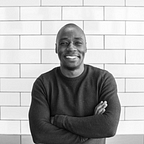UX Design Tip #3: Intro to User Interviews.
Possibly every UX designer’s favorite “activity” — the opportunity to talk to someone you think you can solve a problem for, someone’s life that can be impacted in a positive way because of you. What an honor, what a privilege! User interviews in the digital design space are used as a research methodology to identify users, engage with users, record & interpret user's feedback, and ultimately implement a solution based on the findings User interviews when implemented correctly can help us understand our users/potential users better. They also allow us the opportunity to be invited into their world share their problems, fears, wishes, desires, and play a crucial part in the solution they introduce into that world. Again what an honor, what a privilege.
Depending on where you are in your product lifecycle, you may be speaking to users/potential users for different reasons, depending on the goals you are trying to achieve. This will also dictate the strategy you will choose to implement when conducting your interviews. Let’s look at some of the stages you could potentially be engaging with users/potential users:
- During user & problem validation: Usually done at the beginning of a project. As a UX designer, you’re concerned about knowing your potential user and their problems. You want to understand the context they operate in, the way they do their work (processes), their problems, and when these problems arise.
You’re basically trying to figure out, is this the right person to solve for, and is this the right problem to solve for this person?
- During concept validation: Usually, at this stage as a designer, you have a better understanding of your potential users. Not only do you understand your users, but their problems as well. You know them well enough to have created one or a few concepts that show how you could potentially solve their problems.
You’re trying to test, based on your understanding of the problem(s), how close is your concept in addressing them.
- During prototype walkthroughs: Whether it’s a wireframe or high-fidelity prototype, prototype walkthroughs are an amazing way to get valuable feedback from your potential users. Prototypes will usually have more details like key features, how the functionality works (in addressing identified problems), how the application looks (UI/aesthetics), and how content will be displayed.
This ensures before we touch any code, we are very sure about what the application will do (functionality), how it will look, and what features will be part of initial rollout.
- During usability testing: During this stage, you are looking to get feedback from your users around the overall user experience of the application. From the design to the functionality, to the copy used — you want to ensure that the application is as clear & easy to use as possible.
Usability testing allow us to observe users use our application, giving us insights that we may have overlooked or not considered during design and build.
In the next article, I want to take a deeper dive into how to prepare for a user interview. I will select one of the stages mentioned above, and create an end-to-end strategy around how you could implement a user interview if you were executing one within that stage. Exciting stuff right!
Until then ✌🏾
#YourFriendlyNeighbourhoodDesigner
Originally published at https://www.linkedin.com.
